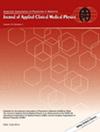Enhanced dose prediction for head and neck cancer artificial intelligence-driven radiotherapy based on transfer learning with limited training data
Abstract
Purpose
Training deep learning dose prediction models for the latest cutting-edge radiotherapy techniques, such as AI-based nodal radiotherapy (AINRT) and Daily Adaptive AI-based nodal radiotherapy (DA-AINRT), is challenging due to limited data. This study aims to investigate the impact of transfer learning on the predictive performance of an existing clinical dose prediction model and its potential to enhance emerging radiotherapy approaches for head and neck cancer patients.
Method
We evaluated the impact and benefits of transfer learning by fine-tuning a Hierarchically Densely Connected U-net on both AINRT and DA-AINRT patient datasets, creating ModelAINRT (Study 1) and ModelDA-AINRT (Study 2). These models were compared against pretrained and baseline models trained from scratch. In Study 3, both fine-tuned models were tested using DA-AINRT patients' final adaptive sessions to assess ModelAINRT ’s effectiveness on DA-AINRT patients, given that the primary difference is planning target volume (PTV) sizes between AINRT and DA-AINRT.
Result
Studies 1 and 2 revealed that the transfer learning model accurately predicted the mean dose within 0.71% and 0.86% of the prescription dose on the test data. This outperformed the pretrained and baseline models, which showed PTV mean dose prediction errors of 2.29% and 1.1% in Study 1, and 2.38% and 2.86% in Study 2 (P < 0.05). Additionally, Study 3 demonstrated significant improvements in PTV dose prediction error with ModelDA-AINRT, with a mean dose difference of 0.86% ± 0.73% versus 2.26% ± 1.65% (P < 0.05). This emphasizes the importance of training models for specific patient cohorts to achieve optimal outcomes.
Conclusion
Applying transfer learning to dose prediction models significantly improves prediction accuracy for PTV while maintaining similar dose performance in predicting organ-at-risk (OAR) dose compared to pretrained and baseline models. This approach enhances dose prediction models for novel radiotherapy methods with limited training data.


 求助内容:
求助内容: 应助结果提醒方式:
应助结果提醒方式:


